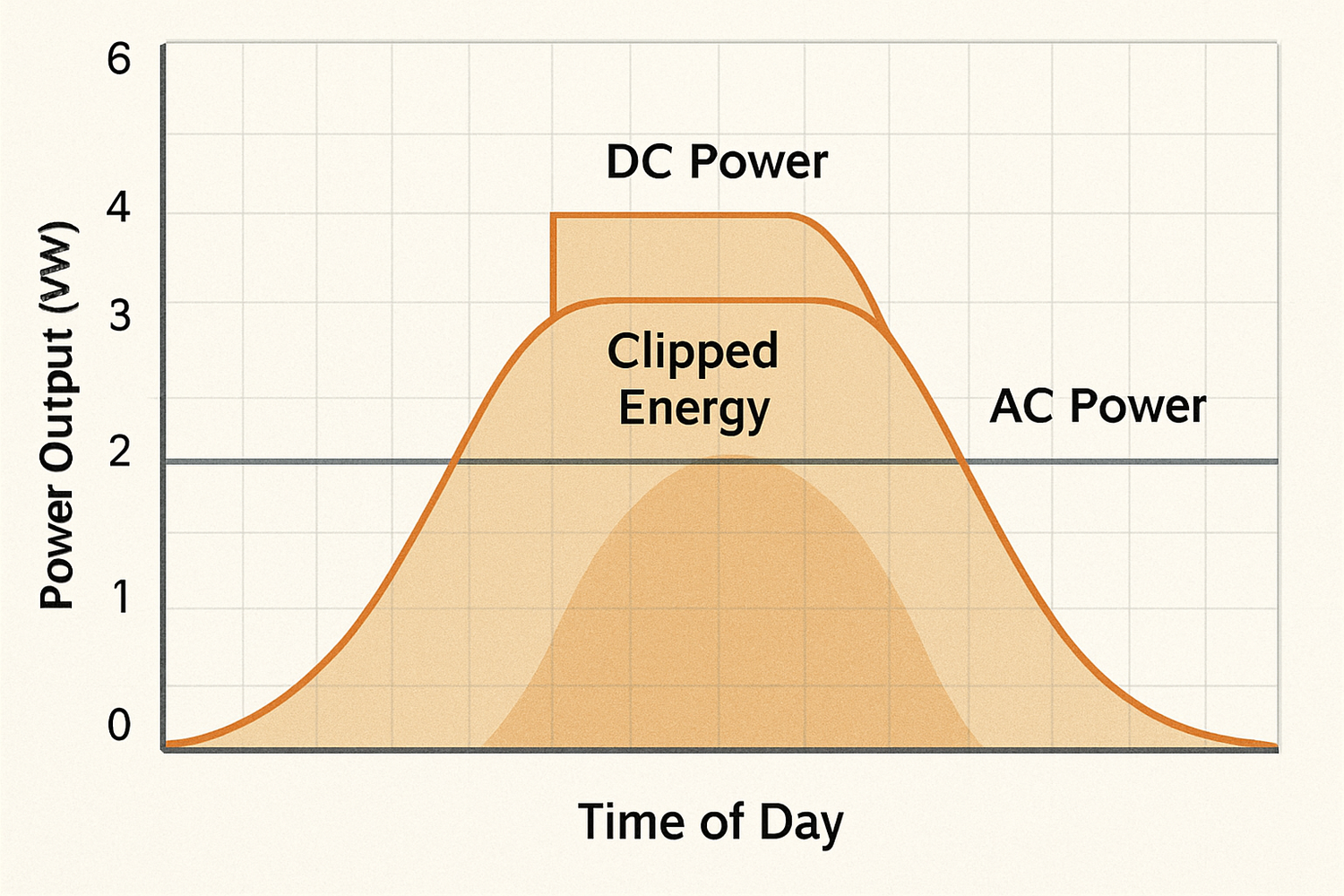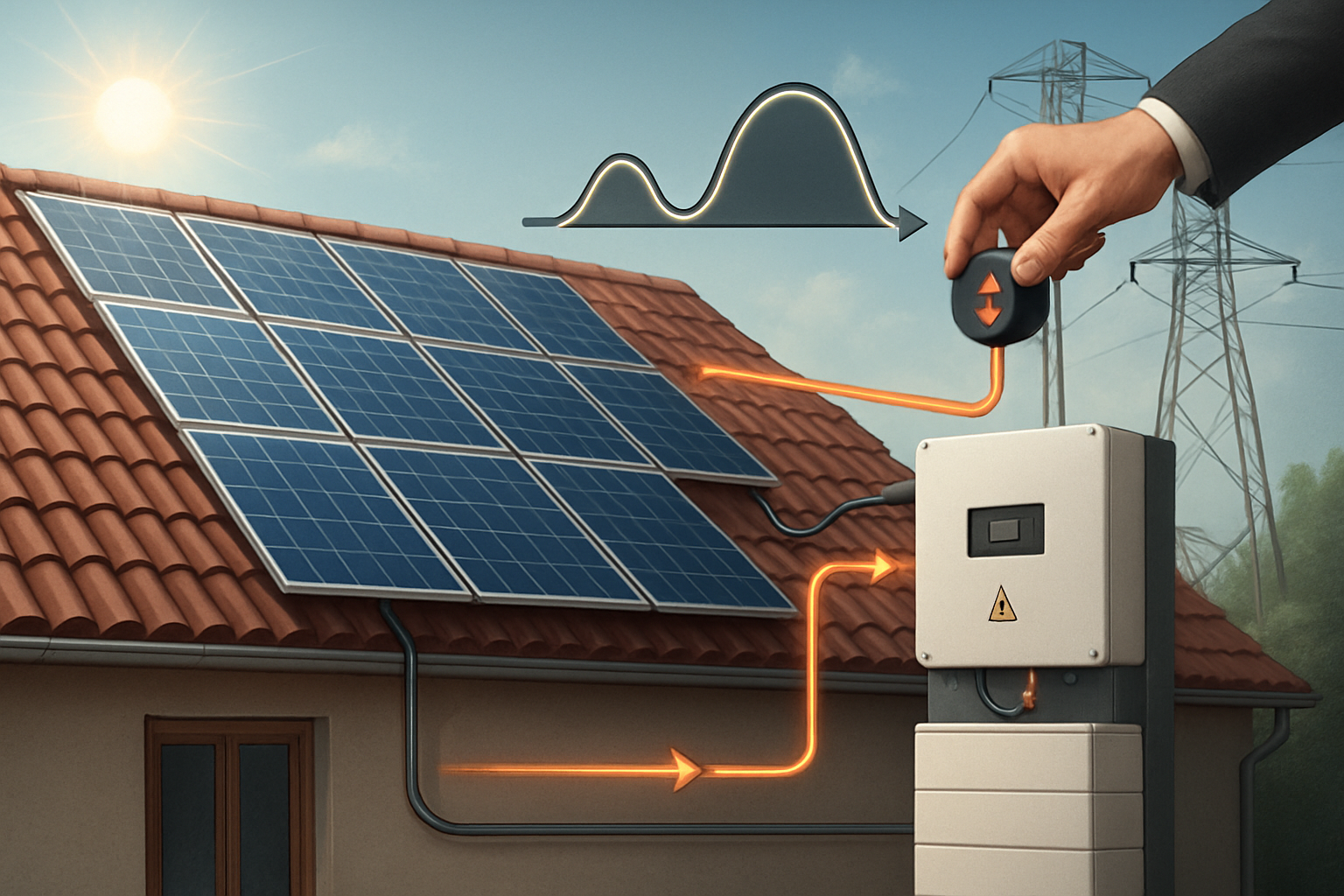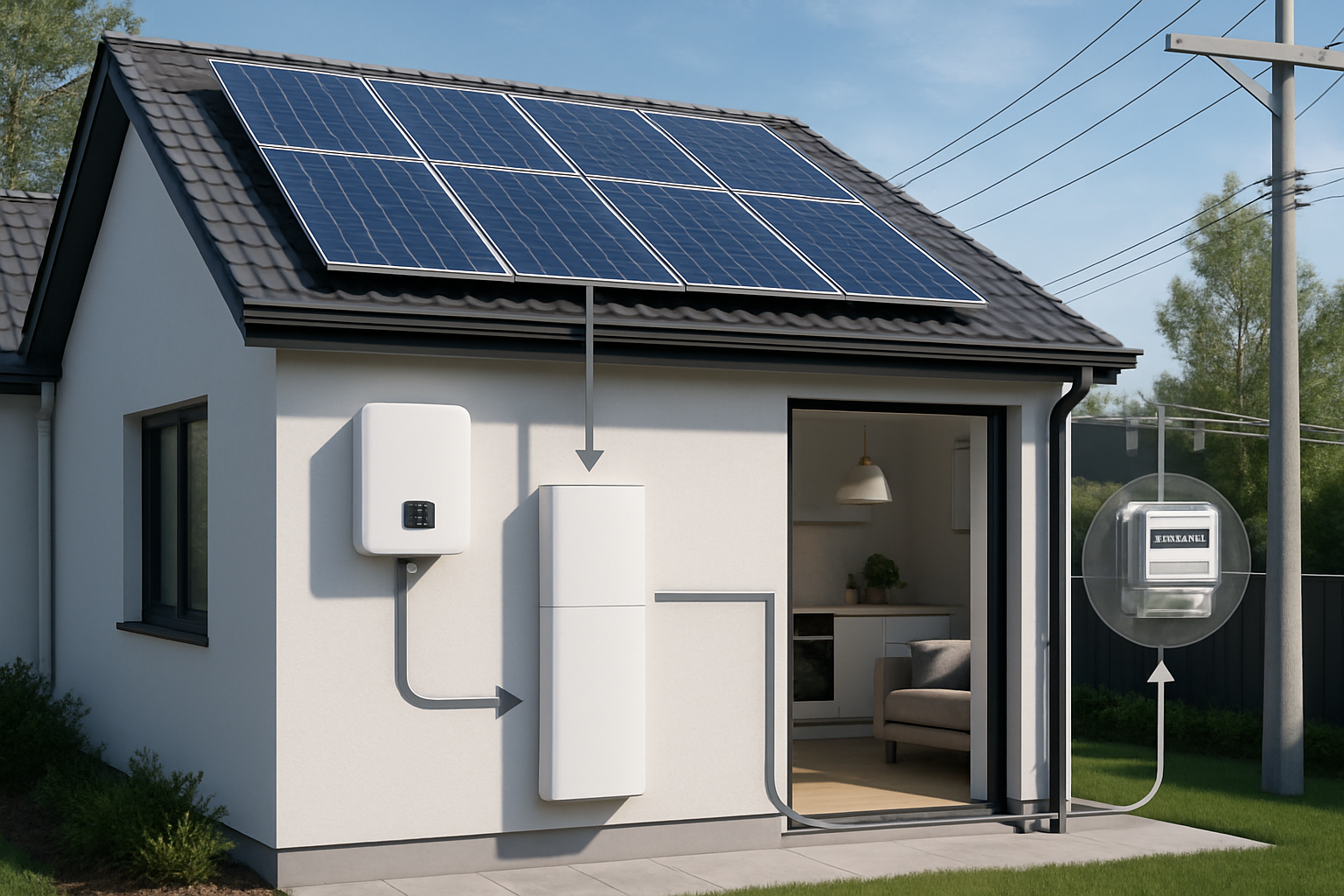Harnessing solar power effectively means understanding key design principles. Two critical concepts for maximizing your solar energy harvest are the inverter loading ratio (ILR) and power clipping. These factors directly influence your system's efficiency and long-term financial returns. This roadmap provides a clear path to understanding and optimizing these elements for a robust and reliable solar installation.

Understanding Inverter Loading Ratio (ILR)
The inverter loading ratio, often called the DC-to-AC ratio, represents the relationship between your solar panel array's total DC (Direct Current) capacity and your inverter's AC (Alternating Current) output capacity. You calculate it by dividing the installed DC capacity by the inverter's AC power rating. For example, a 6 kW DC array paired with a 5 kW AC inverter has an ILR of 1.2 (6 kW / 5 kW = 1.2).
Why do system designers often choose an ILR greater than 1? It might seem counterintuitive to install more DC capacity than your inverter can handle. However, solar panels rarely produce their nameplate capacity continuously. Factors like module temperature, irradiance levels, soiling, and module degradation reduce actual output. Oversizing the DC array ensures that the inverter operates at or near its maximum AC capacity for longer periods throughout the day, especially during morning, late afternoon, and less-than-ideal weather conditions. This practice maximizes the total annual energy harvest.
The U.S. Energy Information Administration (EIA) notes that inverter loading ratios for individual systems typically range between 1.13 and 1.30. Research suggests that optimal ILR values for modern medium- and high-power inverters often fall between 1.1 and 1.3, with some low-power inverters benefiting from ratios up to 1.8. This strategic oversizing can lead to a lower levelized cost of energy (LCOE) by offsetting higher capital costs with increased energy production.
The Phenomenon of Clipping
Clipping occurs when your solar panel array generates more DC power than your inverter can convert into AC power. The inverter, reaching its maximum rated output, effectively "clips" or limits the excess energy, preventing it from being used or sent to the grid. This results in a flattened peak on your system's daily production graph, indicating that your inverter is maxed out even if the panels could produce more.
Clipping commonly happens on exceptionally sunny days, particularly during peak sunlight hours between noon and 3 PM, and is more frequent in spring and summer when irradiance is high and temperatures are moderate. While it represents lost potential energy, studies show that for a typical 1.34 ILR system, clipping generally masks a small percentage—less than 2%—of the annual DC energy yield, occurring approximately 3.5% to 4.0% of the time each year. Despite these losses, the overall energy gains from an oversized array usually outweigh the clipped energy.
While some clipping is an expected outcome of an optimized ILR, frequent and severe clipping can potentially reduce the lifespan of your inverter. Therefore, managing clipping through thoughtful system design is crucial for long-term performance and reliability.
Strategic System Design for Optimal Performance
Designing a solar system that effectively balances ILR and clipping requires careful consideration of several factors. Your goal is to maximize energy harvest while maintaining system health and economic viability.
Balancing Efficiency and Economics
Choosing an appropriate ILR involves a trade-off between maximizing energy capture and managing potential clipping losses. A higher ILR can increase the overall energy delivered to your home or the grid by extending the period the inverter operates at full capacity. This can lead to better project economics, especially when the system size is constrained by AC capacity. The International Energy Agency (IEA) highlights that solar PV system design can be optimized from a system perspective, rather than simply aiming to maximize output at all times, to increase the value of renewable energy generation.
Consider the following illustrative comparison of different ILR values:
| Inverter Loading Ratio (ILR) | Typical Clipping Loss (Annual) | Relative Annual Energy Yield | Economic Impact |
|---|---|---|---|
| 1.0 (DC = AC) | Minimal (0-0.5%) | Good | Higher inverter cost per watt, lower overall annual yield |
| 1.2 (DC > AC) | Low (0.5-1.5%) | Very Good | Optimized balance, increased annual yield, reduced inverter cost per watt |
| 1.4 (DC >> AC) | Moderate (2-4%) | Excellent | Potentially higher annual yield, lower inverter cost per watt, but more clipped energy |
Disclaimer: These figures are illustrative and vary based on location, climate, panel technology, and specific system components.
Panel Orientation and Tilt
The physical orientation and tilt of your solar panels significantly impact energy production and the likelihood of clipping. Panels oriented towards the equator (south in the Northern Hemisphere, north in the Southern Hemisphere) generally maximize direct sunlight exposure and overall energy yield. However, optimizing panel orientation can also reduce variability and increase the value of your renewable energy generation.
For instance, an East-West orientation can spread energy production more evenly throughout the day, potentially reducing peak power output and thus clipping, while still providing substantial morning and afternoon generation. The angle at which sunlight strikes the panel, known as the incident angle, also affects how much light is transmitted through the glass and converted into electricity. Thoughtful design considers these angles to maximize light capture and minimize losses.
The Role of Energy Storage
Integrating energy storage systems (ESS) provides a powerful solution for managing clipping. When your solar panels produce more DC power than your inverter can handle, a DC-coupled battery system can capture this excess energy directly. This means that energy which would otherwise be clipped and wasted is stored for later use, significantly boosting your system's overall efficiency and self-consumption.
DC-coupled systems connect the battery on the DC side of the inverter, allowing surplus solar energy to charge the battery without needing an initial DC-to-AC conversion. This bypasses the inverter's AC output limits and ensures that clipped energy is efficiently utilized. By incorporating energy storage, you can effectively increase your system's ILR without incurring substantial losses, thereby maximizing the value of your solar investment and moving closer to energy independence.
Long-Term Value and System Longevity
To ensure your solar system delivers consistent performance and value over its lifetime, ongoing monitoring and strategic adjustments are vital. Regularly tracking your system's performance ratio (PR) helps you understand its real-world efficiency. Well-designed PV plants typically achieve an average PR of 80% to 90% throughout the year. Monitoring allows you to identify patterns of clipping and assess if your ILR is still optimal as your system ages.
Solar panels experience a natural degradation in performance over time, which means that clipping may become less frequent as the system ages and its peak DC output gradually decreases. This inherent characteristic further supports the strategic decision to implement a higher ILR at the initial installation. By designing with future performance in mind and leveraging advanced energy solutions, you ensure your system remains a reliable source of clean energy.
Empowering Your Energy Future
Navigating the complexities of inverter loading ratio and clipping is a fundamental step toward optimizing your solar energy system. By making informed design choices, strategically sizing your inverter, and considering the integration of advanced energy storage solutions, you can significantly enhance your system's efficiency, maximize your energy harvest, and secure greater energy independence. Thoughtful planning ensures your solar investment provides reliable and scalable energy for years to come.
Frequently Asked Questions
What is an ideal inverter loading ratio for a solar system?
An ideal inverter loading ratio (ILR) is not a single fixed number; it depends on various factors like your location's solar irradiance, climate, specific panel technology, and economic goals. However, many systems find an optimal balance between 1.2 and 1.3. This range often maximizes annual energy yield by allowing the inverter to operate at full capacity for longer periods, even with some clipping during peak sun hours.
Is solar clipping always a bad thing?
Not necessarily. While clipping means some potential energy is not converted, it is often a deliberate outcome of optimizing the inverter loading ratio. Strategic oversizing of the DC array can lead to a greater overall annual energy yield and improved economics, even with a small percentage of clipped energy. The key is to manage clipping to acceptable levels that do not compromise inverter longevity or significantly reduce your system's profitability.
Can energy storage eliminate solar clipping?
Yes, energy storage systems, particularly DC-coupled solutions, can effectively mitigate or eliminate solar clipping. When your solar panels produce more power than the inverter can handle, a DC-coupled battery can capture this excess DC energy directly and store it for later use. This transforms otherwise wasted energy into usable power, significantly increasing your system's efficiency and self-consumption.





Leave a comment
All comments are moderated before being published.
This site is protected by hCaptcha and the hCaptcha Privacy Policy and Terms of Service apply.